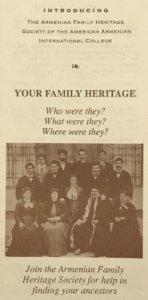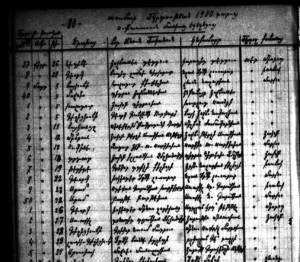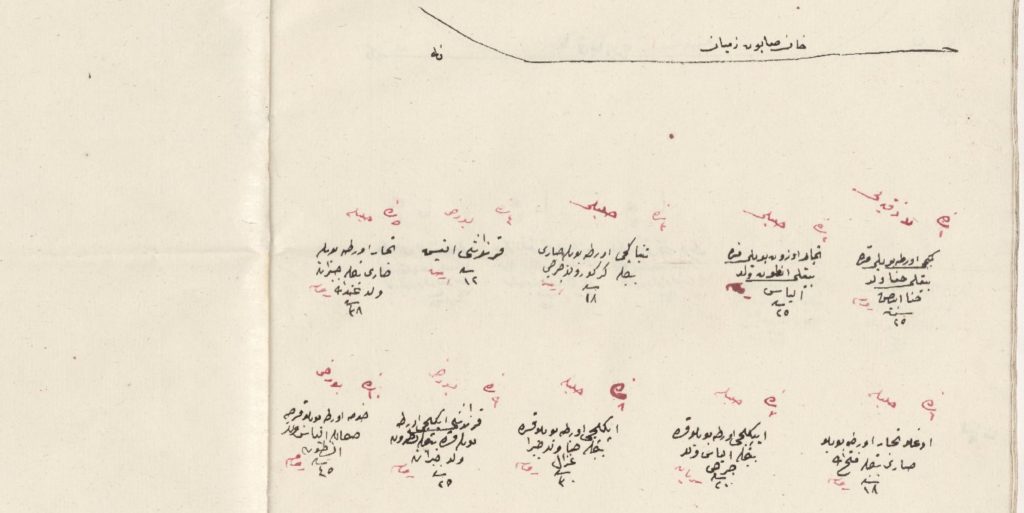Conferences on Armenian genealogy have been held annually for the last three years (in Watertown, Mass. in 2016; in Detroit, Mich. in 2017; and in Mahwah, N.J. earlier this year). These conferences have been the culmination of almost 40 years of effort. In fact, exactly 40 years ago, in 1978, three individuals, Nephi Kezerian, George Aposhian, and Audrey Megerian, took the groundbreaking step of forming a corporation with the purpose of gathering genealogical records to assist Armenians researching their family histories. Initially called the Armenian Genealogical Records Search Foundation, it would later become known as the Armenian Genealogy Society.

The majority of Armenians are under the mistaken belief that all pre-genocide Armenian records have been destroyed and that little can be learned about their personal ancestry beyond what has been handed down through oral tradition. It is undoubtedly true that most pre-1915 Armenian church records were destroyed either during the genocide or in the years since. In addition, few genocide survivors were able or willing to recount their experiences or their family lineage. But that is not the complete story.
The first task for this small group of dedicated Armenians was to identify the existing records, their location and condition. Megerian undertook a ten-week fact-finding trip. As I read through her account, it is interesting to see her sentiments mirror those I continue to possess. She stated, “Although we cannot resurrect or replace what is lost, we can gather and lovingly preserve what exists as rapidly as possible.” She had found “records crumbling from excessive moisture, eaten by worms, or consumed by other forces.”
Megerian also understood the risks to critically important records located in conflict regions around the world. There was an acute sense of urgency to the effort at preservation. In the years that followed, records from around the world were microfilmed and stored in the Granite Mountains Records Vault owned by The Church of Jesus Christ of Latter-day Saints (LDS). To date, these records have been underutilized. In addition, there remain important records that are not part of the collection either because they were inaccessible at the time or unknown.
In 1991, there was a failed attempt to create the Armenian Family Heritage Society along with a family tree project. This was a project of the Armenian Genealogy Society and the American Armenian International College. A wide range of leadership in the community supported the project, including religious leaders from the U.S. and around the world. My certificate of membership is numbered 12. The effort never took hold, perhaps being an idea before its time.

While there are some individuals and families that have spent decades researching their Armenian roots, the great majority of Armenians dispersed around the world have only recently realized the vast potential of the information available as well as the technological advances of the past two decades. The Armenian Genealogy Facebook group now numbers almost 10,000 members!
Two early pioneers that broadened their own research to include information that would be of general interest were Linda Avakian and Mark Arslan. In 1996, Avakian published “Armenian Immigrants: Boston 1891-1901 New York 1880-1897.” This was at a time before ship manifests were readily available. Avakian painstakingly went through rolls of microfilm identifying each Armenian who had come to the United States through the ports of New York and Boston for periods that had not been indexed as yet.

Arslan began his family research many years ago. Eventually he would expand his focus to all Armenian immigrants from the region of Kghi/Keghi and then to all Armenians. His work has grown to become the Armenian Immigration Project website which includes ship manifests, census records, military records and even the ads from the Hairenik placed in the aftermath of the genocide in hopes of learning the whereabouts of relatives. It is the single most important source on Armenians who immigrated to the United States.
While there have been various websites and other resources specific to particular families or villages, that is not the purpose of this article. Much important work has been done to date, but the amount still to be done is even greater as we try to repair the rupture in our family histories resulting from the genocide. This aspect of genocide is little talked about. While focusing on those murdered and the wealth stolen, both monetary and cultural, we have neglected to discuss the theft of knowledge of our origins or the forced global disbursement of our families. The magnitude of the crime committed against our people is difficult to comprehend and impossible to quantify.
My objective here is to detail some of the available source records. In a number of articles in the Armenian Weekly and on Houshamadyan.org, I have only touched on some of these sources. I would like to expand on those initial articles. The obvious question remains, what records exist but are undocumented, where can the be accessed, and how can they be similarly preserved?
The first of this series will examine records from Syria, including those found in the LDS Family History Library and the Ottoman Archives in Istanbul.
Syria

The Syrian-Armenian community is important not only as the major way station for those surviving the genocide, but also as an economic hub attracting Armenians throughout the Euphrates river valley throughout the 19th century and most likely for centuries prior to that as well.
The available records from Syria contained in the LDS archives are limited. As I understand it, the filming of records in 1988 was stopped after completing only one roll. In addition, restrictions were placed by Armenian church officials limiting usage of the records to the Family History Library in Salt Lake City. Given the ongoing tragedy in Syria, one wonders what is the condition of the records that have not been filmed and the ability to access them.

What is available include baptism records beginning in 1843 and continuing through 1937. Marriage records from Holy Forty Martyrs church are only available for the period 1878-1900. The early baptism records supply sparse information, even the date is lacking (e.g. the first baptism recorded is for Boghos, son of Ilias Tahan Kalpakju). Linking a baptism to a known person is complicated by the lack of uniform surnames. Occupation, birthplace, etc. are the only form of identification. The month of baptism was added in 1851 and the day of the month in 1854. In 1873, the godfather and officiating priest were included. It was only after 1900 that the mother’s name appears.
In addition to these records, there is at least one Ottoman population register for non-Muslims in the district of Aleppo. The register dates from 1848-9 and is found in the T.C. Başbakanlık Devlet Arşivleri Genel Müdürlüğü (Ottoman Archives) in Istanbul. Only men were recorded and, again, the lack of standardized surnames is problematic in identification. The following information is contained in the register for each male: income level (high, low, middle), height (tall, short, medium), color and style of facial hair (beard, mustache, clean-shaven), occupation, and age.

Thus far, these records have primarily been used by families from the Chmshgadzak and Arapgir regions, as well as those from Sasun. The transcription of these various records into databases would greatly increase their accessibility and use.
Author information
The post Research Your Armenian Roots—What You Need to Know (Part I) appeared first on The Armenian Weekly.
Source: Armenian Weekly
Link: Research Your Armenian Roots—What You Need to Know (Part I)
